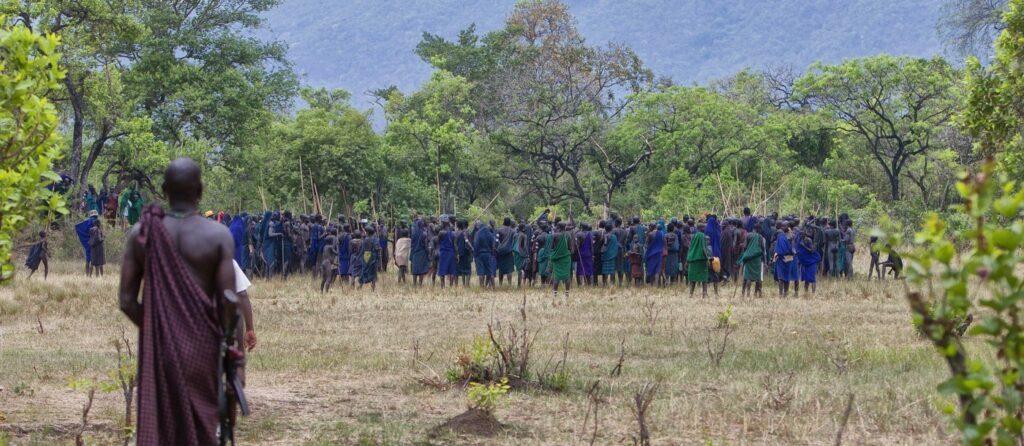THE DONGA

THE DONGA
The Omo Valley, in southern Ethiopia, is populated by various tribes dedicated to agriculture and pastoralism. One of these, the Surma, on the hills to the west of the lower course of the Omo River, lived in almost total isolation, until a few years ago there were not even practicable dirt tracks, the hostilities with the neighboring tribes made the area little safe The most important ritual moment of the year for the Surma people is represented by the Donga which is celebrated in conjunction with the end of the rainy season. It is a fight with sticks with rounded tips that measure two meters in length. The strongest young people from the villages will face each other and, through the Donga, demonstrate strength, skill, dexterity, speed, cunning and courage in front of the community, defending the individual honor, that of the group and their virility. All this allows the winner to acquire social prestige as well as the privilege of being able to choose the woman who will marry him.
The day passes between ecstasy and fibrillation until the afternoon when people begin to arrive from the nearby villages and gather in the place used for the celebration of the Donga, in a circle around the duelists.
As they reach the dueling area, the young men decorate each other’s bodies with kaolin. It is a very sophisticated body art from a graphic point of view, with the aim of showing beauty and virility.
The duels are direct elimination and as the number of contenders decreases, the hysteria among the spectators increases. As in local football, fights often break out fueled by local beer and old grudges. The rules of engagement are few: losing an eye or a piece of scalp is ok; essentially you must not kill your opponent.
Each of the participants searches and chooses his first opponent with his gaze among the neighboring tribes. Some of them, if they find themselves having to face a rival who is too strong, back down and abandon the Donga, kneeling in front of him as a sign of surrender and submission, otherwise the battle continues until one of the two finally capitulates. In both cases, the head of the young winner’s village fires a Kalashnikov shot into the air to declare victory.
As the hours pass, the Donga grows in intensity with more and more participants joining the fight. At the end of the celebration there will be only one winner, the one who has defeated multiple opponents, and he will be carried on the shoulders of his friends in front of the girls of marriageable age so that he can choose his wife.

